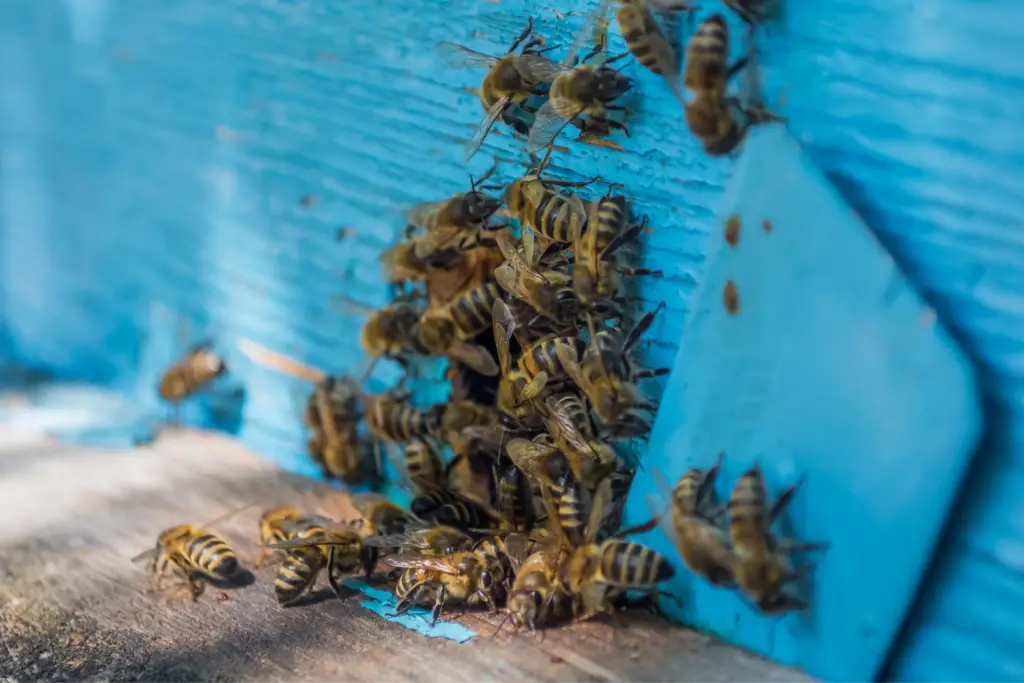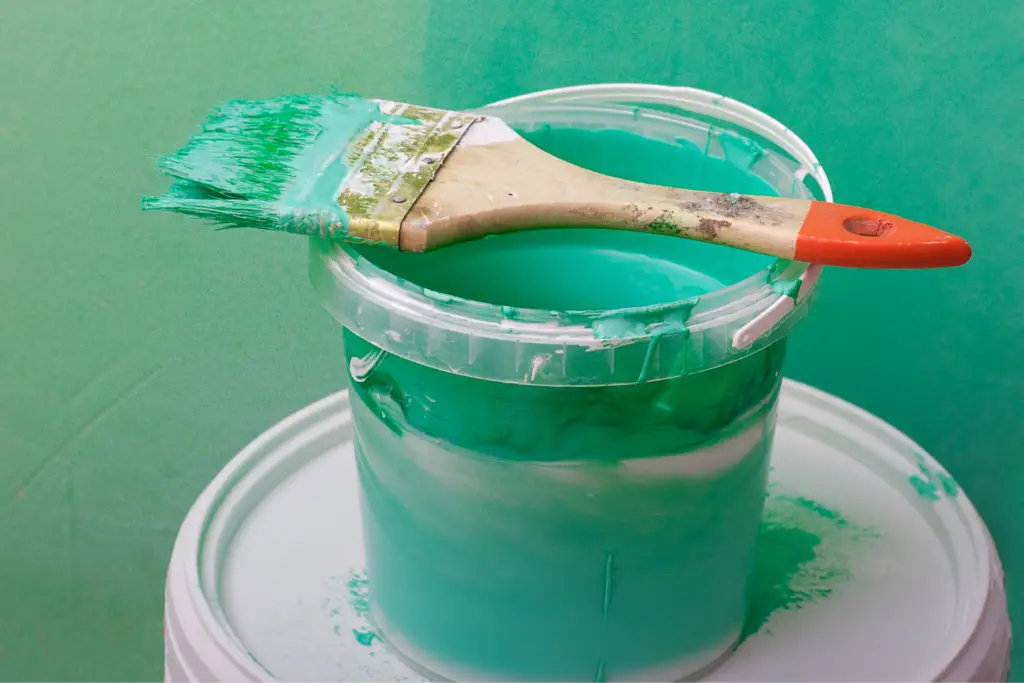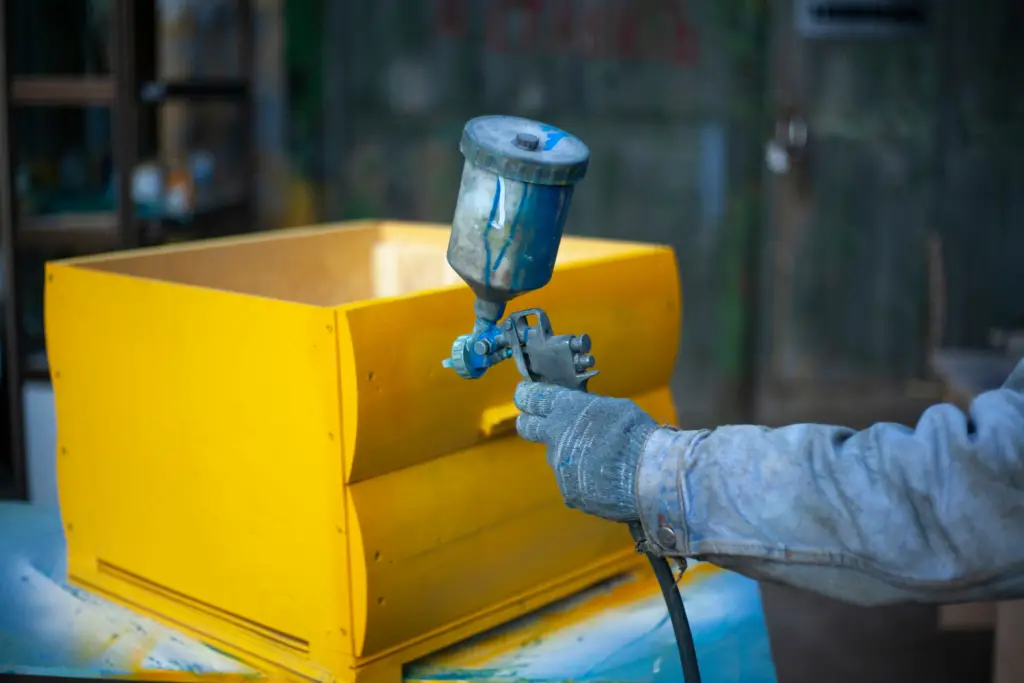Keeping bees is an endlessly rewarding experience. You’ll have plenty of pollinators for your vegetable garden, and you get access to fresh, delicious honey right from your backyard.
If you’ve been considering starting a bee colony, you’re probably collecting all sorts of information about how to provide them with the best home possible. Painting your beehives can be an excellent way to give your little friends a more comfortable and durable place to thrive.
Why Paint a Beehive?
There are many reasons to paint beehives. Most beekeepers paint their hives to make them last longer. While it isn’t absolutely necessary to paint them, adding a few layers of quality paint will help your hives withstand sun, rain, and snow. Unless you’re using cypress, cedar, pressure-treated, or plastic hives, your bee’s homes will be made of pine, which is susceptible to the elements. Painting hives with lighter or darker colors can also serve as a form of climate control for your buzzing buddies.
But protection from the weather isn’t the only reason to paint your beehives. If you live in a suburban setting, you may want to camouflage your hives from neighbors who may be concerned about living near a bee colony. Furthermore, an artfully painted beehive can also add a decorative element to your backyard and be a fun project to share with the family.

Best Paints for Beehives
Traditionally, beekeepers used tung oil or boiled linseed oil to protect their hives. However, the traditional method is a bit complicated, and the oils won’t protect against UV rays from the sun. These days, most beekeepers paint their hives with latex paints.
Water-based latex paint is easier to work with and clean up. If you’ll be painting your hives with the kids, you definitely don’t want to use oil-based paint. Plus, water-based paint dries faster and emits less odor. Smelly paints can discourage the bees from living in your hives because chemical odors interrupt bees’ pheromones.
Look for exterior water-based paints with low levels of volatile organic compounds (VOCs). Paints with VOC ratings of 50 or less work well for beehive painting. However, the best paints for beehives are Real Milk Paints, which have a VOC rating of zero. Real Milk Paints come either premixed or in powder form. Another excellent choice is a low-VOC, water-based exterior paint that contains zinc oxide to resist mold.
You can use a low-VOC exterior house primer to seal the wood. Priming the wood makes subsequent paint layers stick better and helps the hive resist mildew to keep it from rotting.
Colors for Beehive Painting

Many beekeepers simply paint their hives white. White or light pastel colors like pink and mint green will help the bees stay cool on hot summer days. However, people who live in especially cold climates may want to use darker colors to help retain heat.
If you want to camouflage your hive, you’ll need to use natural colors like earthtones and greens. But if nosy neighbors aren’t a concern, you can make your hives stand out with bright colors. Some beekeepers swear that the bright colors attract bees and butterflies to your garden. If you’re inspired to get creative with your beehive painting, you’ll find some incredible design ideas on Pinterest.
Beekeepers who prefer the look of natural wood can use low-VOC stains and clear exterior-grade polyurethane. Deck stains work particularly well because they’re waterproof and protect the wood from UV rays. Another option for a natural look is to coat the hives with melted beeswax.
Tips for Assembling Beehives
Before you paint your beehives, you’ll need to make sure you’ve assembled them correctly.
You don’t just want to nail or screw your hives together, but reinforce them with high-quality wood glue. Professional carpenters often say that the nails or screws are only used to hold things together until the glue dries.
Before you start gluing and nailing, you’ll need to use a carpenter’s square to make sure that all of your angles line up. If your hive boxes aren’t squared properly, they won’t stack well. You’ll also want to double-check that the handles and frame rests are right-side-up. There’s nothing like finishing a beehive and then realizing that you’ve assembled it upside down.
Protip: If you don’t have a hive stand, get one or make one. Placing your beehives on stands will protect the wood and deter pests.
How to Paint a Beehive

The key to beehive painting is protecting the parts that will be exposed to the elements and leaving the areas that are in contact with the bees natural. Painting the insides of the hive will either cause the bees to leave or waste time chewing off potentially toxic paint and disposing of it. Besides, the bees will protect the inside of the hive for you by coating the walls with propolis.
You’ll need to paint the hives several weeks before you plan to start housing your bees in them. Even if you use low-VOC paint, you’ll still need to give your hives time to off-gas any residual chemicals. You should never attempt to paint a hive with the bees inside. The smell will cause them to vacate the premises or even become ill.
Before you begin painting, clean all the exterior surfaces. If you’re reusing old hives, you’ll need to sand off the old paint and make any necessary repairs. When the surfaces are ready, start painting by applying the exterior primer. Most beekeepers find it easier to paint all the outside corners, seams, and joints first. Pay special attention to the top and bottom boards, which tend to be the first parts to wear out. You may even want to give these areas two coats of primer.
Allow your primer to dry, preferably overnight. After the primer is completely dry, you can start applying your desired paint colors. If you’re planning to paint an artistic design, you’ll probably want to sketch it with a pencil before painting your hive.
Beehive Painting Quick Guide:
| Hive Stand | Paint it all. | Supers or Hive Box | Paint everything but the inside. |
| Bottom Board | Paint everything but the screen. (If it has one.) | Frames | No paint |
| Entrance Reducer | No paint. | Inner Cover | No paint |
| Slatted Rack | Only paint outer areas. | Outer Cover | Only paint the outer areas. |


